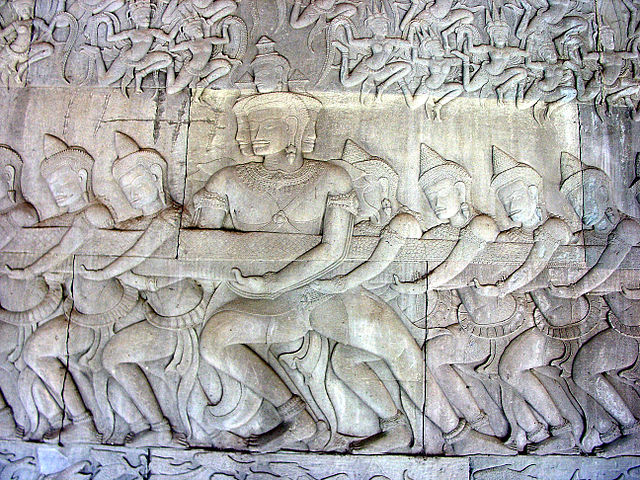
Large Deva
Churning of the Sea of Milk
South wing of east gallery
Angkor Wat

|
Large DevaChurning of the Sea of Milk
|
The second large deva (diagram, #6) has been identified by Mannikka as another form of Vishnu, based as usual upon alternations of light and shadow at the solstices. This is also consistent with a version of the myth in which Vishnu "lends his strength" to the devas in order to accomplish the churning.
A five-headed Vishnu, as here, would be unusual but not unknown (a fourth directional head is understood to be present, but hidden behind the visible three; 4 directional heads + 1 top head = 5 heads in total). This figure has also been identified as Brahma, or Shiva. Brahma seems less likely because that god is usually represented with either four heads or one; nor does he play a prominent role in the myth. Shiva is more likely: in the myth he absorbs a deadly poison coughed up by Vasuki, and five-headed representations of Shiva, while rare, are not unknown; there is one at Wat Phu, for example.
At this point it seems best to reserve judgment about the identification of this figure, while admitting that, if the large asura (diagram, #2) is Vishnu, then this large deva is likely to be Vishnu also, especially since Angkor Wat is a Vaishnava temple in the first place. But plausibility is not proof.

|

|

|